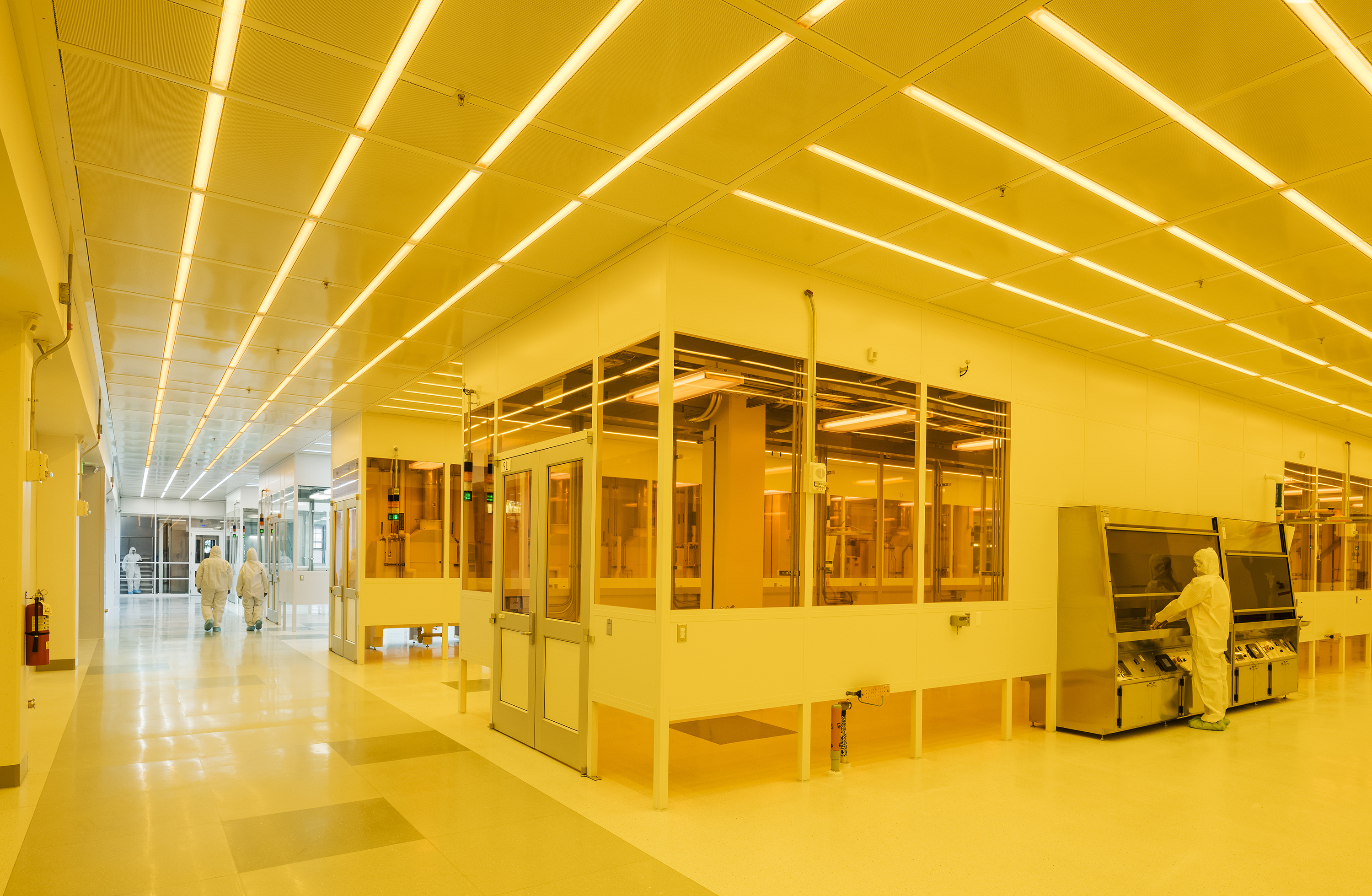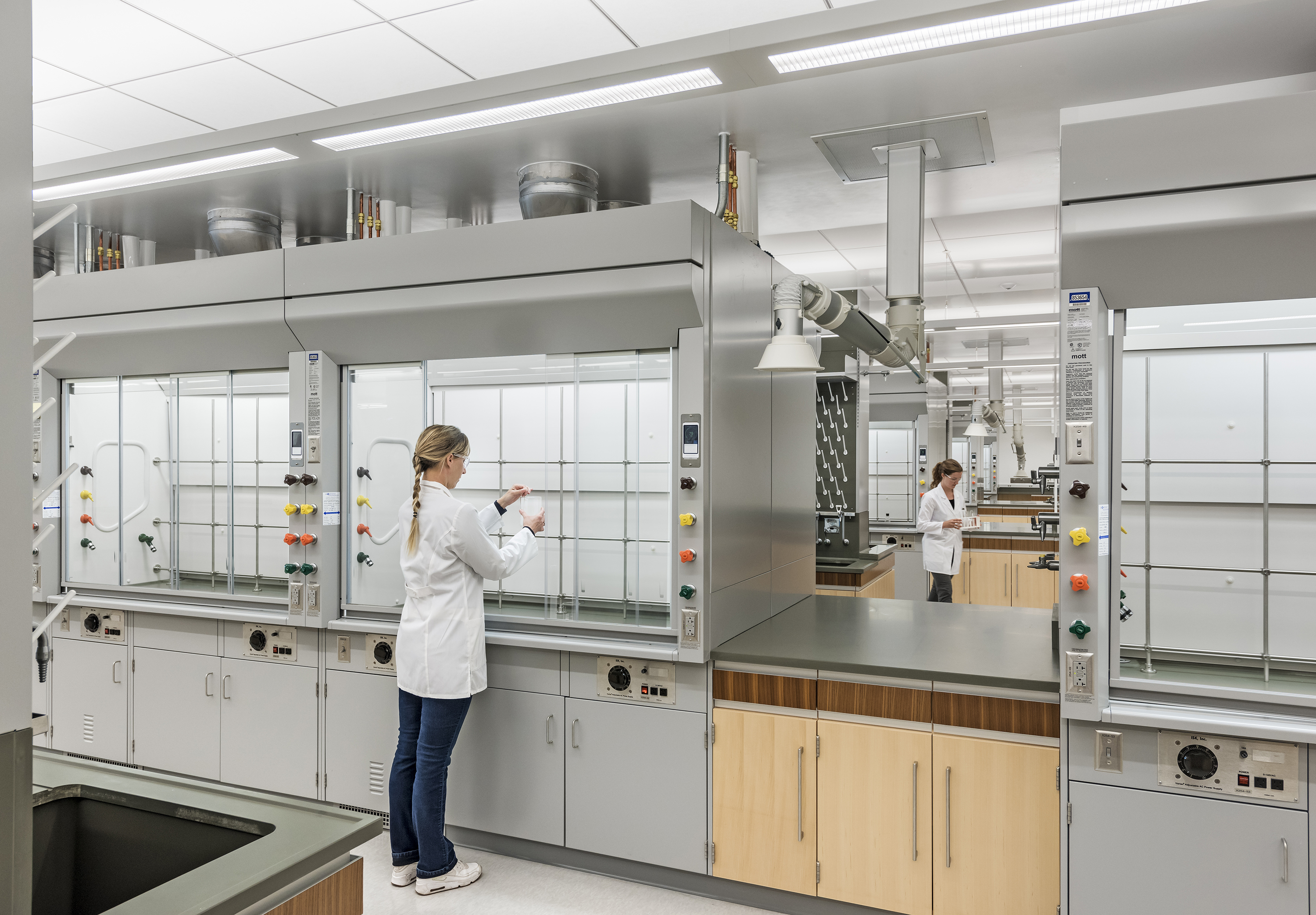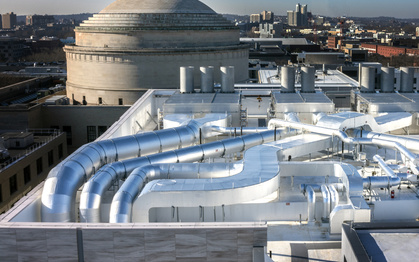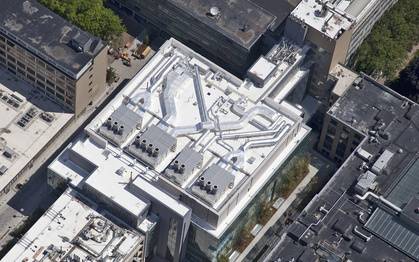ACEC/MA Engineering Excellence, Gold Award
ACEC National Engineering Excellence, Grand Award
R&D Lab of the Year
AIA Merit Award, Educational Facility Design
2019 I2SL Go Beyond Project Award
AIA Cote Top Ten
BR+A was the engineer and sustainability champion for MIT.nano which saves more than 50% in energy costs over the LEED baseline and 51% reduction in operating carbon footprint. Through innovative applications of advanced engineering concepts, this high-performing building is the most energy efficient facility of its kind, on track to be the first LEED Platinum cleanroom facility. We were responsible for the research into best in class cleanroom performance, benchmarking peer institutions, energy and life-cycle cost analysis of all 140 energy conservation measures evaluated, LEED certification project management, and the utility incentive analysis and application process.
MIT.nano is accelerating, modernizing, and supporting vital research and is the centerpiece of MIT’s new Innovation Initiative. Research performed in MIT.nano will lead to discoveries and solutions that will define our era. The project exceeds the current needs of the program and provides the flexibility to adapt as those needs change. We took MIT’s broad goals, gave them definition, and brought them to fruition in this game-changing facility.
Of the many types of research facilities, cleanrooms require some of the most complex and specialized mechanical infrastructure. The mechanical systems must provide extreme levels of control over air filtration, temperature, humidity, vibration, noise, water purity, power quality, chemical distribution, exhaust management, and life safety. MIT knew that their new cleanroom facility must be able to achieve the strictest research parameters, supporting their most advanced experiments.
MIT is also aiming for a carbon neutral future. However, cleanroom facilities typically use significantly more energy than any other type of building on campus. Therefore, MIT defined the goal of building the highest performing academic cleanroom in the country as both: 1) providing the greatest capacity to support the most specialized research and 2) integrating innovative strategies to achieve unprecedented cleanroom energy efficiency. The problem was, there was no clear precedent or resource to define what it would mean to provide the greatest capacity, nor to achieve unprecedented energy efficiency.

The design process began with our own research effort. BR+A gathered data from 15 of the top college and university cleanroom facilities across the country and incorporated Lawrence Berkeley National Lab (LBNL) benchmarking data of non-academic cleanroom facilities. We used the data to define a “best-in-class” range, addressing both the need to provide tremendous capacity and the flexibility to operate at extreme efficiency.
Through the process of benchmarking peer facilities and evaluating nearly 140 energy conservation measures, we identified eight ‘Above and Beyond’ energy conservation measures that are not standard practice in cleanroom design, yet have the potential to significantly reduce cleanroom energy use. MIT.nano incorporates an unprecedented six out of these eight strategies; none of the other facilities surveyed have implemented more than four.

The design team defined the bar, raised the bar, and then leapt over the bar. Targeting best-in-class performance, incorporating over 60 energy conservation measures, and implementing an unprecedented six of the eight “Above and Beyond” strategies resulted in a 51% energy cost savings and a 50% greenhouse gas emissions reduction, compared to the LEED ASHRAE 90.1-2007 baseline. This resulted in the award of all available points (19 points) under the LEED EAc1 Optimize Energy Performance credit. MIT.nano is in the process of finalizing the construction phase submission, on track to be the first LEED Platinum cleanroom facility. We also championed the utility incentive analysis, resulting in an incentive for MIT of approximately $2,400,000, which is more than twice the $-value per square foot of any of our past utility incentive applications. Becoming the first LEED Platinum cleanroom and achieving an unprecedented level of utility incentives supports our claim that the MIT.nano team met MIT’s challenge to build the highest performing academic cleanroom in the country.


"From the outset of the programming and design process, MIT, Wilson Architects and the entire design team forged an alliance, committing to making MIT.nano the most sustainable research nanotechnology building in the world. Benchmarking by BR+A of the energy use, performance and capacities of peer universities’ existing facilities confirmed that it would be take a Herculean effort by all stakeholders in the MIT.nano project to achieve that commitment. Through MIT’s and Wilson Architect’s leadership, we all succeeded. Congratulations to MIT, Wilson Architects, Turner Construction and the entire design team for your amazing accomplishment! "
Cris Copley | BR+A Principal-in-Charge
Photography Credits:
Hero image + Photos 1 and 2:
© Anton Grassl Photography and Wilson Architects
Photo 3: Monica Carroll and BR+A
Photo 4: Samir Srouji and Wilson Architects